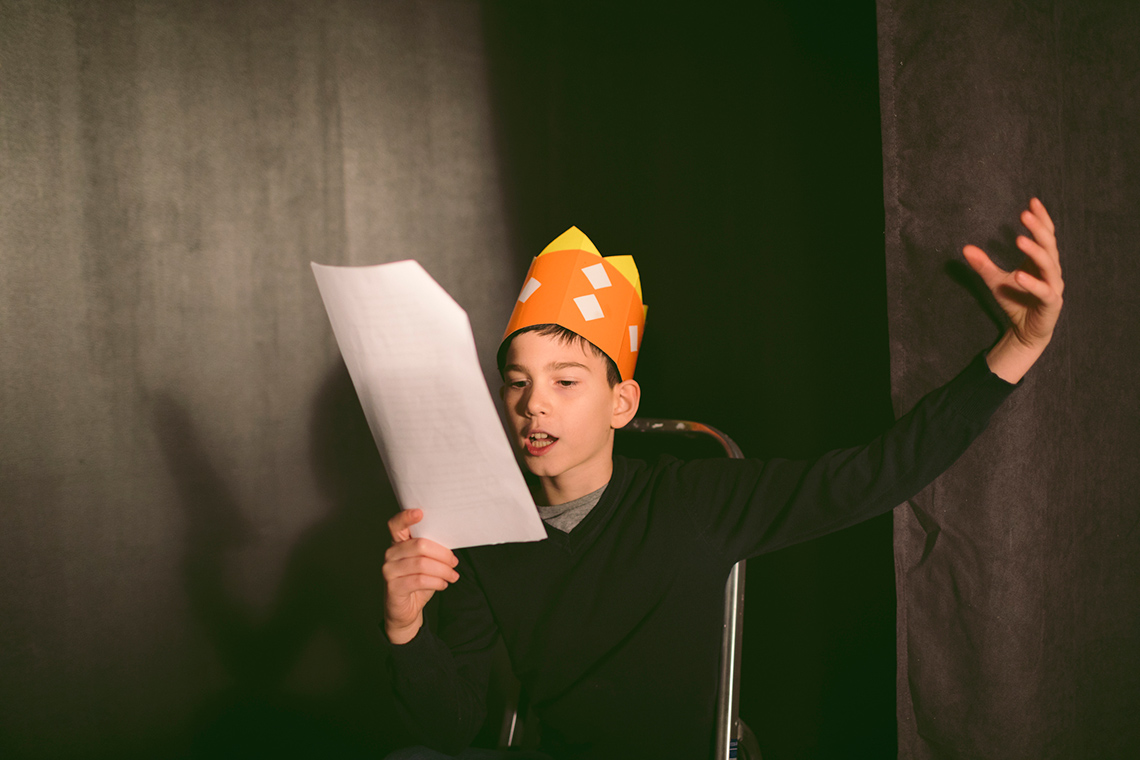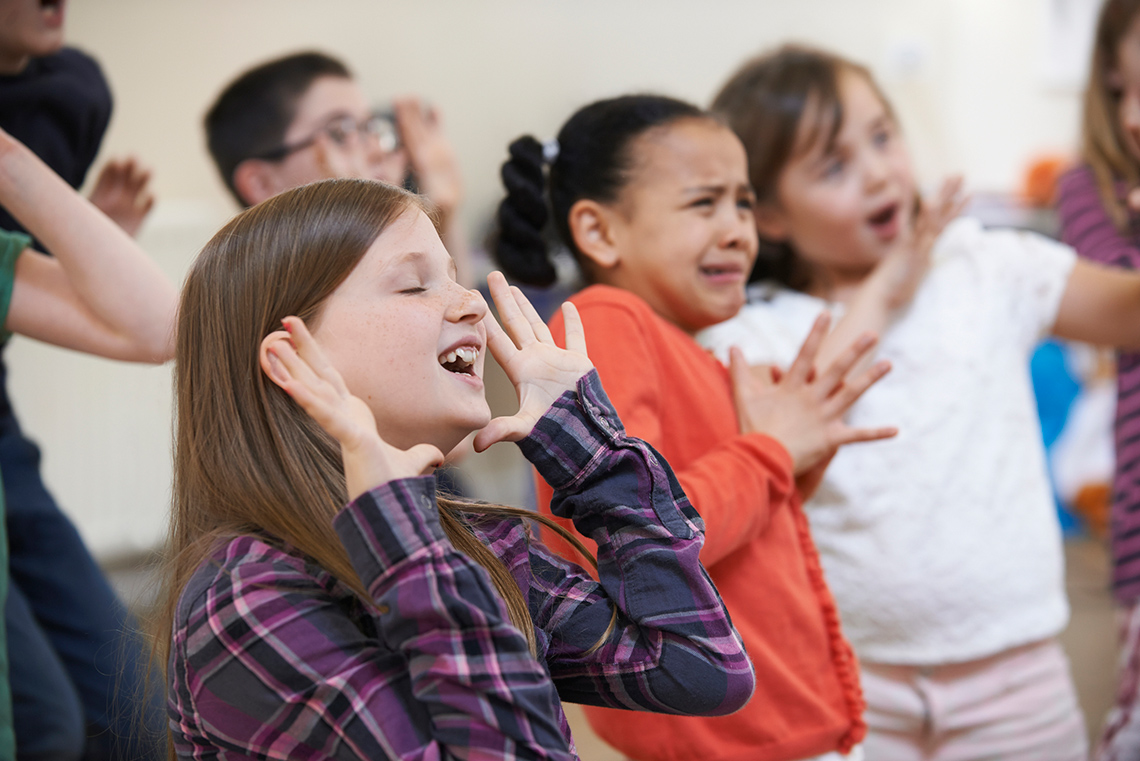Minds On
Performances
Explore the examples of performances in the following carousel:
Student Success
Think-Pair-Share
What are some important elements that we need to include in a performance?
What communication and presentation strategies can we use during a performance?
Discuss with a partner, if possible.
Note to teachers: See your teacher guide for collaboration tools, ideas and suggestions.
Action
The power of gestures and verbal cues
Using physical actions and vocal effects are ways to communicate a message.
In dramatic performances, gestures and verbal cues are used often in an exaggerated way.
Brainstorm
What communicates a message?
Think about the different types of performances from our Minds On activity. What gestures and verbal cues can you use to communicate a message?
Record your ideas using a method of your choice.

Communication and presentation strategies
Let’s review our communication and presentation strategies from a previous learning activity.
For each sentence, select the missing (letter, word, or phrase) from the drop-down menu.
Think about all of the different oral texts you have explored, then answer the following questions:
- Which oral texts communicate a message using verbal cues?
- Which oral texts communicate a message using non-verbal cues?
- Which oral texts communicate a message using adjectives?
Discuss your answers with a partner if possible, or complete the Strategies of Oral Texts Table in your notebook or using the following fillable and printable document. You can also use a method of your choice.
Strategies of Oral Texts Table
| Strategies of Oral Texts | |||
|---|---|---|---|
| Record examples of oral texts that you have explored in the past, then check off the communication and presentation strategies that were used for each oral text. | |||
| Oral text | Verbal cues | Non-verbal cues | Adjectives |
| 1) | |||
| 2) | |||
| 3) | |||
Press the ‘Activity’ button to access Strategies of Oral Texts Table.
Consolidation
Performing a message
Actors use gestures, verbal cues, and adjectives during their performances. They sometimes exaggerate these cues so that their message is very clear to the audience.

Explore the following list of messages. How would you use different gestures, verbal cues, or adjectives to clearly communicate these messages?
| Messages to Communicate | |
|---|---|
| Yes | No |
| Maybe | I don’t know |
| Go | Stop |
|
Hurry up |
Slow down |
|
Come here |
Go there |
|
Please |
Thank you |
|
I’m warm |
I’m cold |
|
I’m excited |
I’m afraid |
Choose six messages from the list to perform and practice performing your messages. Once you feel like you are ready, share your performances.
Perform your six messages to a partner if possible, or record your performances using video or audio. You can also record a detailed description of your performances using a method of your choice.
Comparing performances
When you are finished performing, respond to one of the following questions:
- If you had a partner, compare your performances. What is different? What is similar?
- If you worked independently, what other ways could you communicate the messages you chose?
Record your response using a method of your choice.
Reflection
How do you feel about what you have learned in this activity? Which of the next four sentences best matches how you are feeling about your learning? Press the button that is beside this sentence.
I feel…
Now, record your ideas about your feelings using a voice recorder, speech-to-text, or writing tool.



